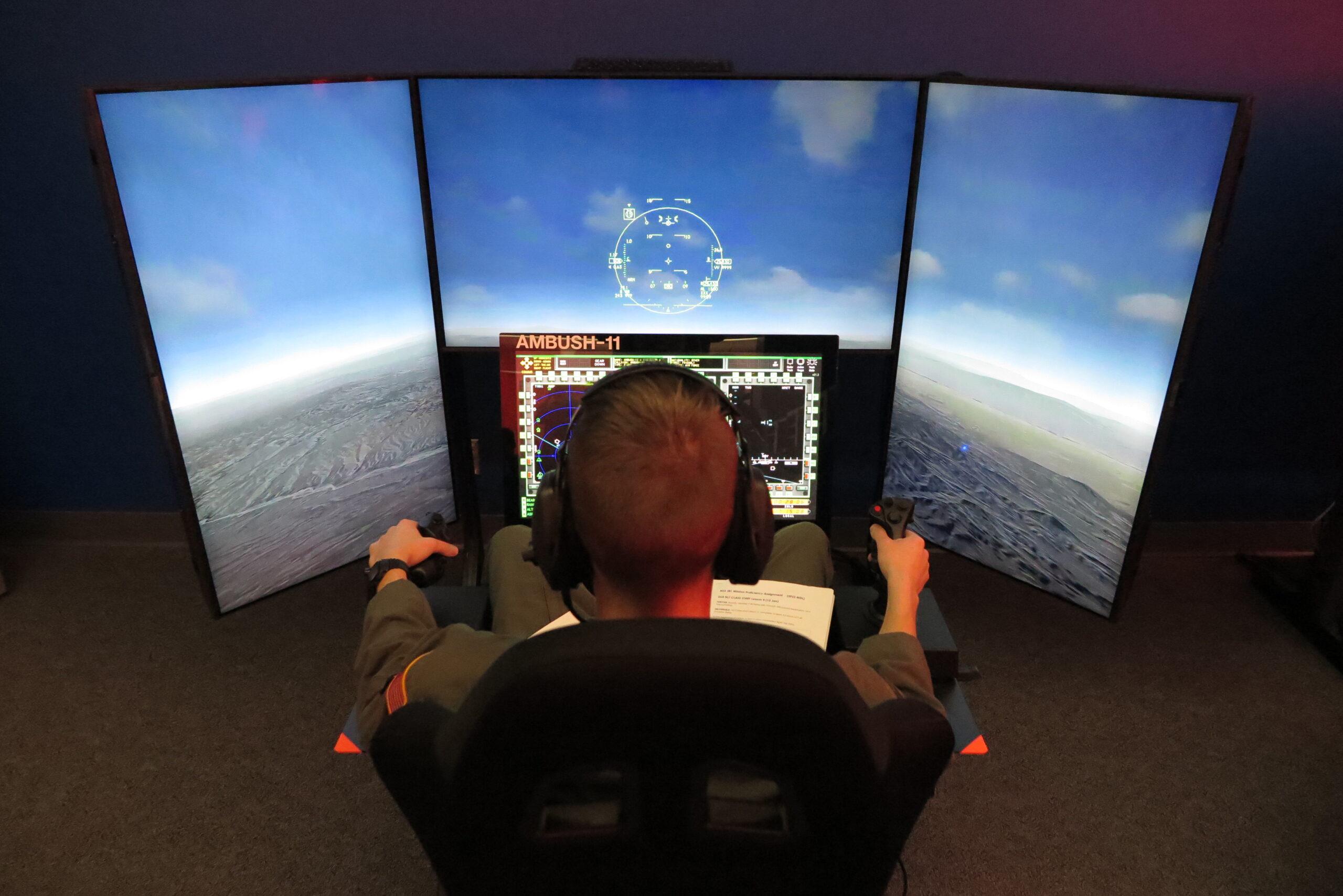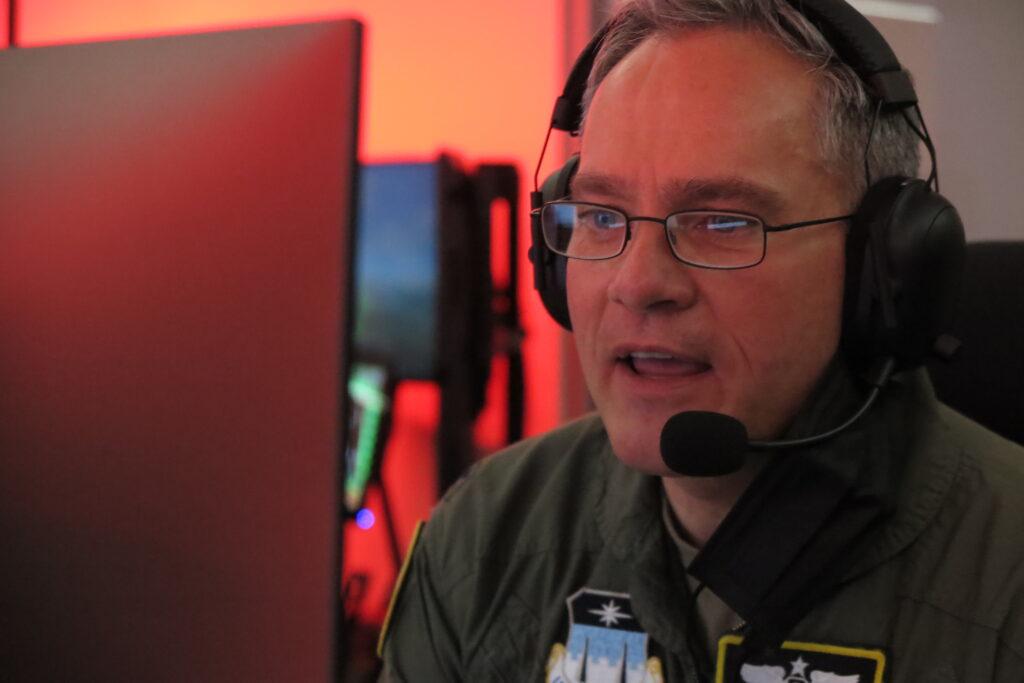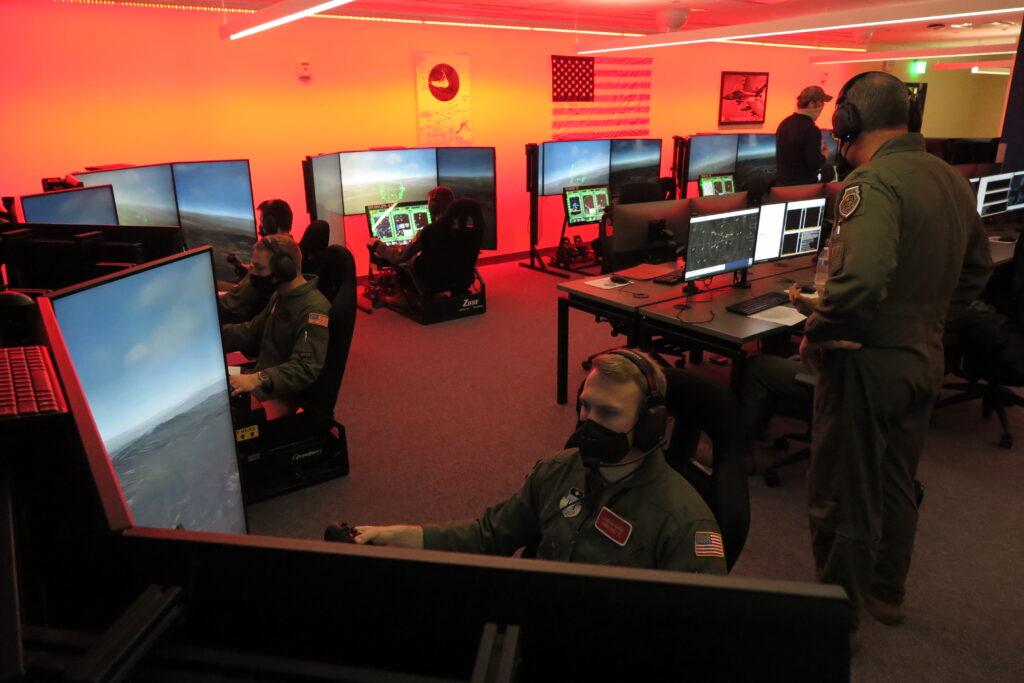
Cadets at the U.S. Air Force Academy in Colorado Springs are taking their military strategy courses out of the classroom for the first time and into the cockpits of 24 wargame-ready flight simulators as well as six unmanned aircraft simulators.
“This is a quantum leap … in war fighter education,” said Col. Tom Swaim, head of the academy’s military and strategic studies department.
The nearly $10 million project, dubbed the “Multi-Domain Laboratory,” has been four years in the making, according to Swaim. Cadets have been using the equipment since the lab’s completion in September.
Flight simulators are not new to the academy grounds, though in the past their use was focused on teaching cadets the basic principles of flying aircraft. And the Air Force has been using some form of flight simulators since the 1950s, when computers and other technology made it possible to simulate the real-life cockpits inside airplanes. Today, the Air Force even uses virtual reality to train pilots.
But, the Multi-Domain Lab marks the first time teams of cadets in simulators can work together on mock missions. Each station can be made to simulate a wide variety of aircraft under the command of a fully equipped operations center. Meanwhile, cadets in an adjacent room can join the mission flying the simulated drones.

Leaving the lab after his first couple of hours in the simulators, third-year cadet and Air Force pilot hopeful Jake Hannas said he would soon be practicing real-life combat scenarios in ways well beyond cadets of the past.
“We’ll be a little bit ahead of the curve,” Hannas said. “For those who don’t want to be pilots … they’re going to get exposure to how the tip of the spear works. I think that’s a really neat opportunity.”
Hannas said he felt intimidated by the scope of the learning curve ahead of him and other future Air Force pilots. No one has real-world experience in the types of battles they’re rehearsing; not their teachers nor today’s fighter pilots.
For one, few of the scenarios the cadets train with will be against the insurgent organizations that have dominated the last two decades of American warfare. Rather, Col. Swaim said the simulated battles involve “high-end, near-peer competitors” using highly advanced, 21st Century technologies.
“This is relevant for all of our cadets across the board. This is the mission.” said Master Sgt. Bonnie Rushing, an instructor in the military and strategic studies department.
“They do war-game against the [Chinese] People's Liberation Army and all of their assets, and they don't always win,” Rushing said. “That's a scary world for them to go into. And that's why it's great to give them this environment, make those mistakes and have them move forward, understanding the bigger picture.”









